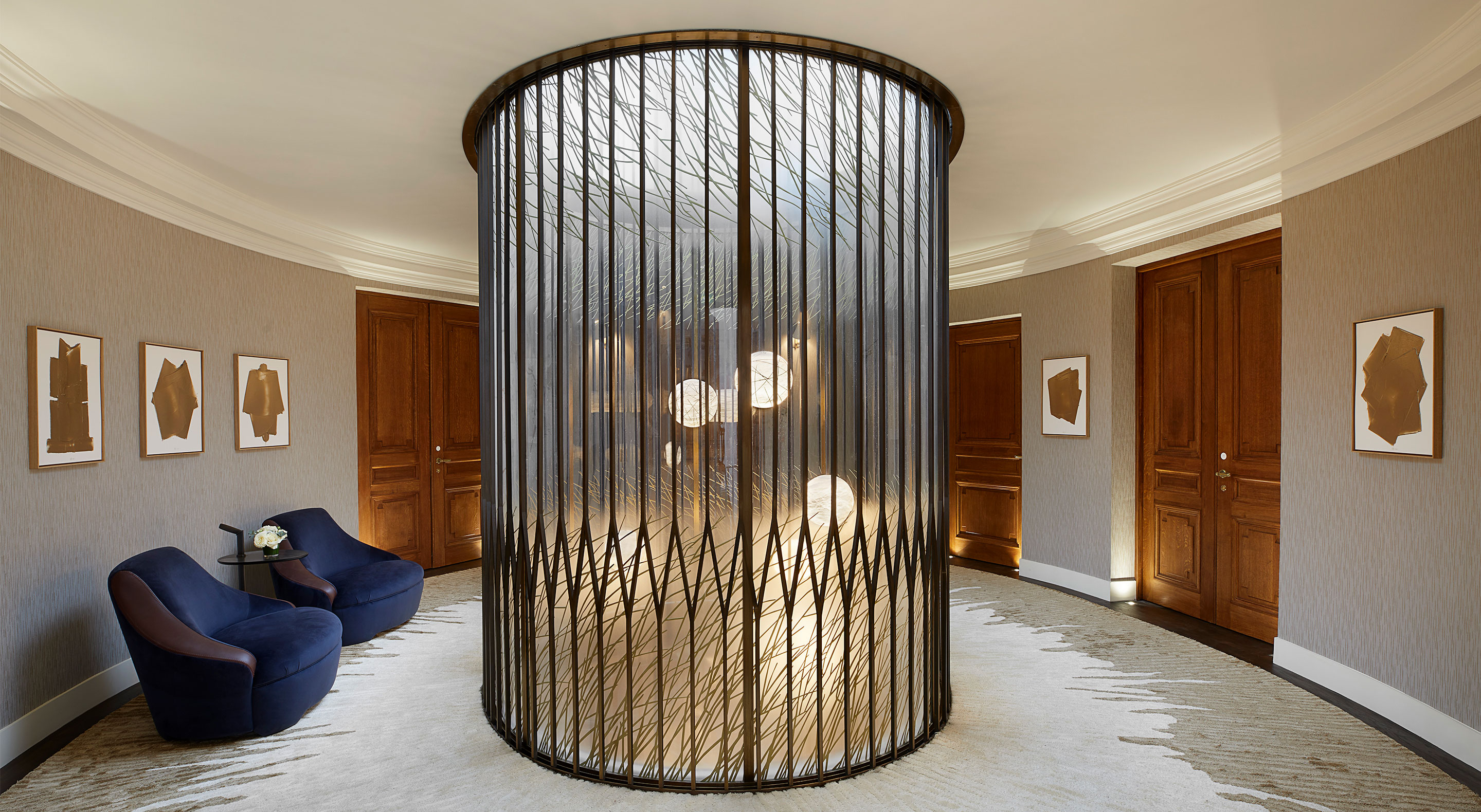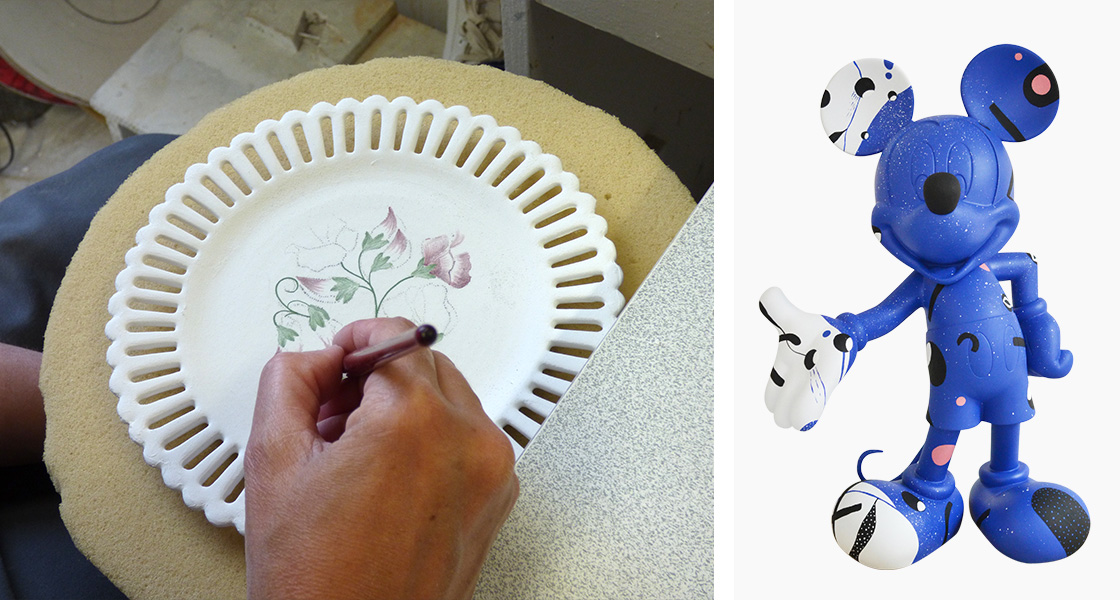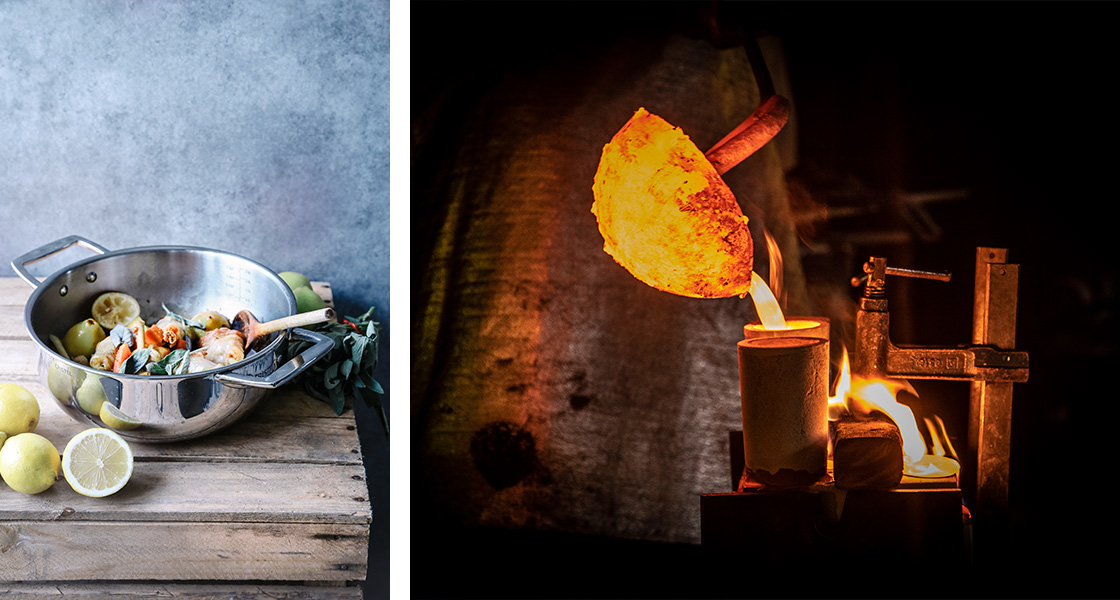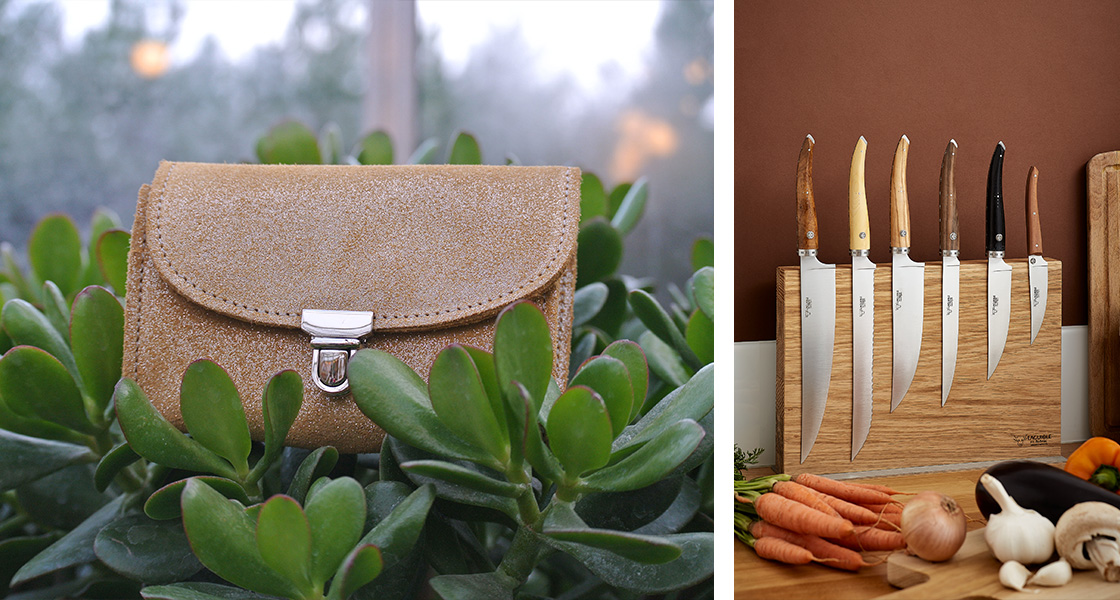EPV. Codename French excellence
Published on 6 March 2021

French excellence isn’t solely restricted to prestigious design houses. EPV. These three tiny letters are the hallmark of artisans and businesses who keep expertise alive and perpetuate a passion for quality.
In Normandy, the Leblon Delienne workshops sculpt figurines of pop culture icons or breathe life into designs dreamed up by big-name designers and artists. In the Tarn, La Cartablière works its magic on leather to produce delightfully feminine handbags, wallets and satchels in colourful, glittery hues. Laguiole in Aubrac continues to manufacture the traditional knives for which this part of the Aveyron has been so well known since 1829. In the Sarthe, the Macheret foundry shapes, pours, polishes and carves bespoke bronze or brass pieces, as well as manufacturing light fittings for its own brand, Entrelacs. Just over 30 miles away, the artisans at the Bourg-Joly pottery have been turning clay into alluring hand-painted pieces since 1747. Over at Fesches-le-Châtel in the Doubs, since 1982 Cristel has been producing saucepans, frying pans, cooking pots and stew pots that are stunning and strong in equal measure. So, what do these firms scattered right across France and producing such a diverse range of objects all have in common? They’ve all been awarded the EPV label, singling them out as a Living Heritage Firm (Entreprise du Patrimoine Vivant).

This Government-backed label was born in 2005 from a political desire to showcase France’s excellent and highly technical industrial and artisanal know-how on an international stage. Fifteen years later, of the 1,371 firms that can proudly flaunt these three little letters endorsing their impeccable quality, a good third come from the interiors sector. To be awarded the accolade, they must fulfil three core criteria: they must employ complex or rare know-how underpinned by expertise in highly technical or traditional techniques; they must have a specific economic heritage, such as machines, equipment or patents, acquired through production experience; and they must have robust local roots and a strong reputation in France or overseas.
Obtaining the EPV label was one of Paul Macheret’s top priorities when he and his youngest brother, Yves, took over the reins of the family-run foundry in 2012 from their father, Philippe, who had set up the business in1982. “I said to my Dad, for you, it’s a celebration of your outstanding expertise and craftsmanship, and for us, it’s the guarantee of a bright future.”
This government-backed label is the only one of its kind in the world. “It serves a similar purpose to the “by appointment to Her Majesty The Queen” warrant that appears on products in the United Kingdom,” he explains. It acts as an endorsement of the firm’s quality and reliability for customers and suppliers alike, both in France and overseas. “The label’s status is further enhanced by the firms to whom it is awarded,” observes Damien Dodane, who heads up Cristel. “The fact that brands such as Lalique or Hermès bear the EPV endorsement has a knock-on effect on all the others, helping them shine brighter than ever.”
It’s fair to say that “practically all EPVs export their goods”, comments Anne-Sophie Duroyon-Chavanne, CEO of the French National Institute of Arts and Crafts, the organisation behind this ever-growing label: “It acts as a seal of approval in the B2B world. EPVs regularly choose to work with other EPVs, as they know that their suppliers have the same stringent quality standards and meet the same criteria as themselves. On top of that, the label serves as an attractive selling point for customers.”

Back to those three magic letters. The meaning behind the E and the P is pretty straightforward, with E standing for Entreprise (Firm) and P for Patrimoine (Heritage). The third, Vivant (Living), takes a little more explaining. “It’s a forward-looking label, not one that is set in stone. It’s not a medal that is handed over simply to be displayed. It’s a pledge to keep the expertise alive, to hand it down to others and ensure that it perpetually lives up to the accolade,” points out Macheret. It is by no means a lifelong distinction, with each recipient undergoing a review every 5 years conducted by a panel of experts and peers. One criterion is crucial. “The aim of the label is not simply to preserve expertise, but also to ensure it gets passed on. Firms who fail to implement the necessary measures will end up losing their label”, explains Duroyon-Chavanne.
And that’s a real challenge, since the younger generation generally show very little interest in such trades. Furthermore, it’s something that requires substantial investments. “In EPVs, people arrive armed with their own expertise, but it takes around one year to 18 months to train them up on the specific skills required for the trade in question, and sometimes as long as 5 years for them to be able to work unsupervised”, adds the CEO of the National Institute of Arts and Crafts.
In order to tackle this issue, the EPV’s founders have worked with Les Compagnons du devoir* to reintroduce a mentoring scheme that had been phased out in this sector decades ago. The network of businesses that have been awarded the EPV label welcome this type of initiative with open arms. “At the head of these firms today is a generation of people in their forties and fifties who gladly share their expertise. Things were different for the previous generation. Founders all had their own way of doing things, their own secrets. Today, we’re a team. We talk, share information, sometimes even offering tips. We help each other out. Why? Because we know exactly what each person’s special skills are and we know that they work in the same way as us, with the same passion,” enthuses Paul Macheret.

The term Vivant also refers to the fact that the criteria for being awarded a label are not set in stone - they were updated in 2020 - and that they adapt to society’s ever-changing demands. One example would be the addition of a CSR (Corporate Social Responsibility) criteria. “We are increasingly on the lookout for products that are primarily manufactured in France and for firms that demonstrate social and environmental responsibility”, explains Dodane, who has just been appointed as a member of the selection committee. In actual fact, prospective EPVs have often launched CSR initiatives long before submitting their application. “They are committed firms headed up by people who are passionate about their trade and invest in their local region and their manufacturing sites. They generate employment and help the local economy thrive. They have often introduced processes to make good use of their offcuts, recycle their waste, source traceable materials. When listing their initiatives to see if they meet the criteria, they frequently realise that they have already ticked a lot of the boxes,” points out Duroyon-Chavanne.
The EPV label is clearly a positive and dynamic initiative for all concerned. It encourages firms to push their boundaries, to train up the next generation, to be innovative and to nurture strong roots. Above and beyond the quality of the products, it sends a clear message to clients that the relationship is reliable and future-proof.
“We’ve been working with the same retailer in Japan for the past 30 years”, says Dodane. “It’s a country that is very demanding in terms of quality and expertise, so our local partners were extremely pleased to hear we had been awarded the label. It gave us the opportunity to tell them about everything we had put in place. And to express our gratitude, too, as it was partly thanks to the Japanese market that we ended up securing the label, as we’d had to cater to their exacting standards. Standards that we then applied to the rest of our production, which is ultimately what helped us obtain the EPV.”
It would seem that V doesn’t just stand for Vivant, but for virtuous, too.
*Compagnons du devoir: this mentoring scheme was set up in France over 70 years ago and features on the UNESCO’s intangible cultural heritage list.
By Marie Montuir
Discover this brands on MOM
La Cartablière
Faïencerie de Bourg-Joly
Cristel
Juliette de Blegiers, president of Leblon Delienne, describes the steps that led to the takeover of this workshop that bears the "Living Heritage Company" label.